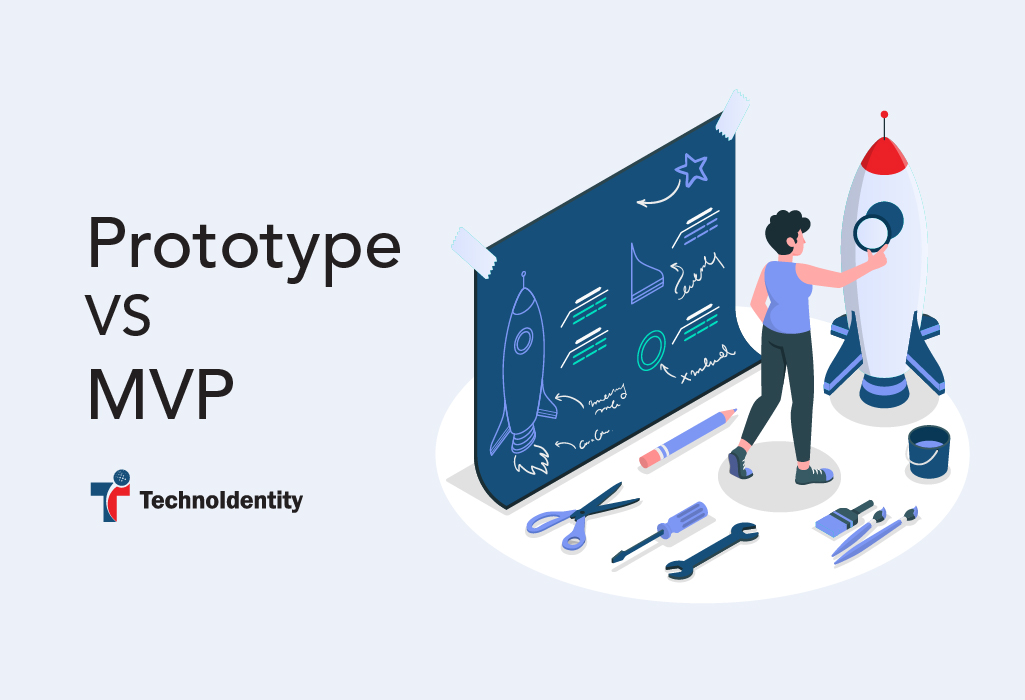
To launch a startup, several aspects have to be decided and considered, one of which is whether to build a Minimum Viable Product (MVP), a proof of concept, or a prototype. Any of this helps to reach the product-market fit, which essentially means that if the market likes the product for which there is a huge demand, then the parent company has achieved a product-market fit. To figure out what your company needs, you need to be familiar with the options available and understand the concepts.
What is a Prototype?
A prototype is a tangible version of your theory that is given a form. So instead of a vague idea, it is the physical manifestation of it. It provides a sample and can vary from being a sketch to something more interactive depending on the time and resources spent. It is about exploring as much as it is about developing and one of the benefits of having a prototype is that it helps to engage with your engineering and design teams, it gives them an idea of what to build and what the expectations are of the product. The prototype can be as simple as you like depending on your level of skill.
- They are quick to create
- They are not expensive
- Reduces cost and time-to-market
They are non-committal and can be used in every stage of the design process, and not every prototype goes on to become the final product. A prototype helps to explore possibilities, understand concepts and improve functionality regardless of whether the prototype is created from scratch or just improving something that already exists.
Types of Prototype
- Paper sketch: As the lowest level of prototype, it is the most basic way to communicate your idea of what the user interface looks like. Collaborating with a designer may help to create a more visually aesthetic output to display to stakeholders or investors.
- Digital sketch: Many tools help to create a working mock-up of the product that would convey what you envisioned.
There is no need for an overload of features to get your point across successfully so note their level of complexity.
What is MVP?
Minimum Viable Product is exactly what it means, the bare minimum version of the product that still satisfies the customers’ needs. It allows the team to learn about the customers with the least effort and helps to understand what works and what does not. A minimum set of features to engage early users and start the process of learning and feedback. Entrepreneurs can start the process of learning as quickly as possible and will not waste a long amount of time on research only to find at the end that it has no demand. MVP helps to eliminate features that are not necessary or even adapt some essential functions. It helps understand your product, audience, and environment better.
What is the difference between Prototype and MVP?
Prototypes are great to dazzle the stakeholders after a wonderful presentation and to use the initial investment to start production. That is where the designers will have to focus on the MVP, this will help to receive feedback from the early users and work on different iterations to mold the MVP into the final product. Both MVP and prototype are very similar in many aspects but an MVP will be considerably further along in the development process than the prototype. An MVP will be created when you have tested the idea through a prototype and have a proof of concept. The prototype acts as a foundation for the MVP, which is important to have because 95% of the new consumer products launched in a year fail. Some benefits of MVP include: –
- Helps to win over potential stakeholders
- It helps to evolve your project
- Aids in minimizing the cost of development
- Faster to release than the final product
A prototype is not good enough and a minimum viable product is something that can be developed and released to gain feedback while solving the problem. But a prototype is not useless, it helps to frame the idea and bring it into a form that can be understood. Also, at the earliest point, you have no proper funding which makes a prototype ideal because it is non-committal. An MVP can only be created after understanding the product better and getting funded. While a prototype helps to measure the feasibility of an idea, MVP is more about validated learning.
Conclusion
Both play a fundamental role in product design and launch so it is essential to understand both concepts, their advantages, and their use. Knowing what to create and how is the key to a successful product design. Staying customer-focused and data-driven will help to build a product that efficiently serves the purpose and in analysis further into the development process. Know when to give up if your idea of a product is not in demand in the market and does not expect to build a perfect version of the product in the prototyping stage. It may take many iterations to build an MVP that would eventually become the final product.


